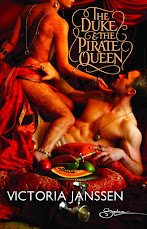p. 183-184 "Bentham declared in 1797 that population could be controlled not by a 'prohibitory act' or a 'dead letter' but by 'a sponge', indicating that a range of contraceptives was already known to the late eighteenth-century, middle-class readers of the Annals Of Agriculture. Carlile, in the first book published in England on birth control--Every Woman's Book: Or What Is Love (1826)--described the woman's use of a sponge, the man's employment of a baudruche or 'glove' and partial or complete withdrawal."

Marie Stopes published Married Love in 1918, which eventually sold over a million copies. She published Wise Parenthood later in 1918. She opened her clinic in 1921.
"In Europe [condoms] were still being made of animal skins and silk into the twentieth century; French propagandists provided information on how housewives could make condoms or baudruches from intenstines purchased at butcher shops...by the 1850s relatively cheap rubber condoms were available in the United States, A.M. Mauriceau offering to sell them at $5.00 a dozen."
19th century: condoms were too expensive for many people, and were prone to bursting. Also associated with disease and prostitution.
p. 184-185 "The invention of the diaphragm did represent a significant innovation in fertility control." 1882: "a soft rubber shield." Expensive, and had to be fitted by a physician. Douching after intercourse was recommended, though it was less effective than coitus interruptus.
Spermicides in the form of powders or jellies began to be developed at the turn of the century. Soluble quinine pessary in use in the 1880s. Women also made their own pessaries from cocoa butter or glycerine.
Latter decades of 19th century both useful and dubious contraceptives and abortifacients could be bought by mail or in barber shops, rubber goods stores, and pharmacies. Salesmen went door-to-door in some neighborhoods.

p. 217 Margaret Sanger founded the American Birth Control League in 1916. Opened her clinic in 1923.
p. 186 "nineteenth century Europeans' first means of limiting births was..simply abstaining from intercourse." Upper classes could have separate beds and/or bedrooms for husband and wife. People married later at end of 19th century. Rhythm method also followed by some, once idea of fertile periods discovered; unfortunately, the truth of a woman's cycle was not discovered for a long time. Extended nursing another method of limiting births.
p. 195 "Holy Mother we believe / Without sin thou didst conceive: / Holy Mother, so believing, / Let us sin without conceiving." (Alexandre Boutique)




Fascinating. Apparently during the Regency period there was also a roaring trade for used sheep gut condoms which were cleaned and resold by a couple of enterprising ladies in London one of whom was known as Mrs. Jenny. LOL
ReplyDeleteAlso pre-19th century, condoms weren't used for contraception, merely to protect men from contacting syphilis or any other nasty disease.
Also pre-19th century, condoms weren't used for contraception, merely to protect men from contacting syphilis or any other nasty disease.
ReplyDeleteThat was a major concern in WWI, too, though I don't have a lot of sources on it yet.